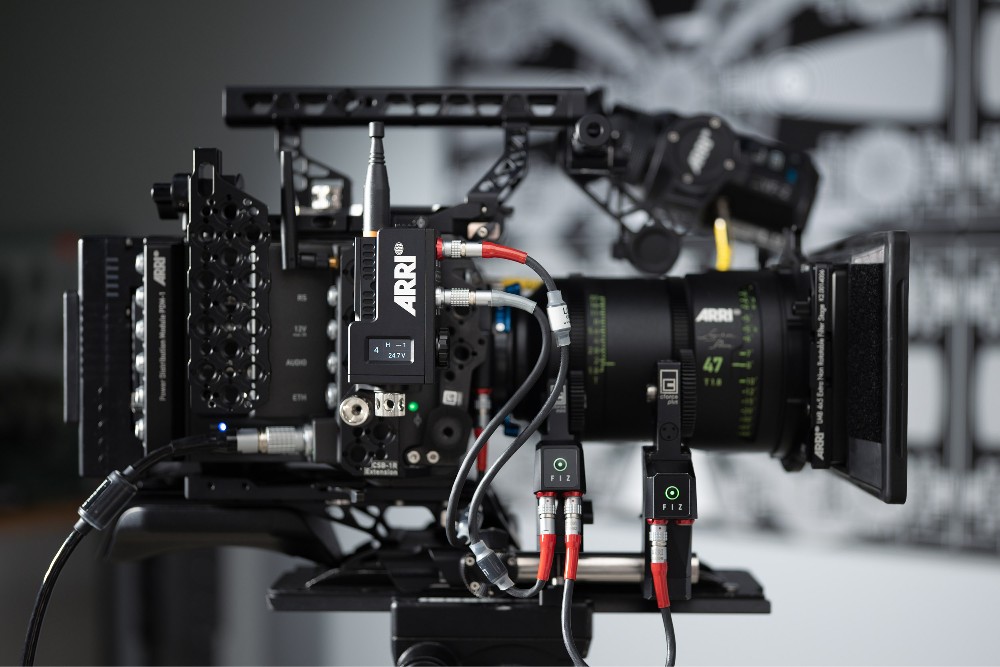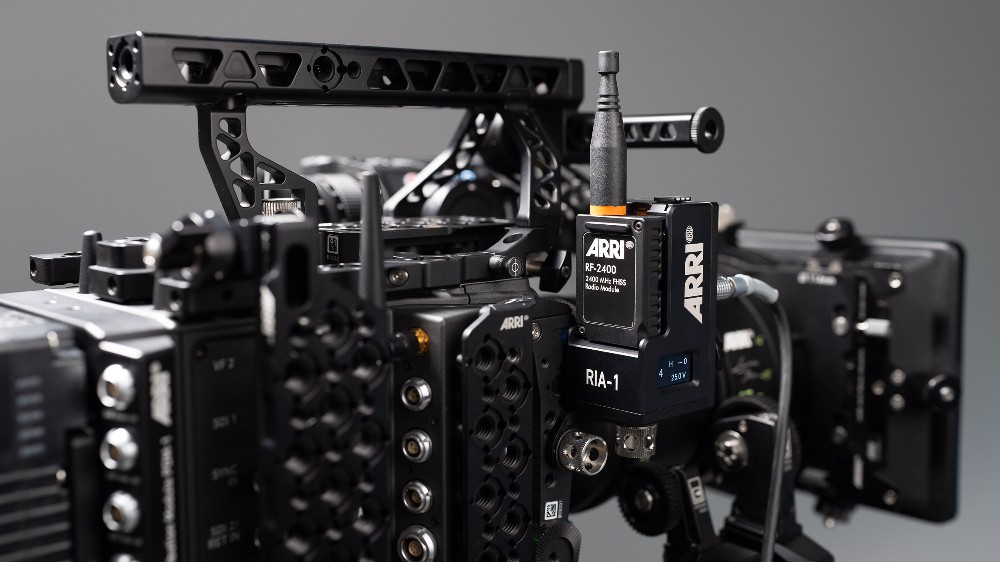
ARRI has announced that its RIA-1 Radio Interface Adapter, part of the evolving ecosystem for the ARRI Hi-5 hand unit, is now available and shipping.
Compact and solidly-built, the RIA-1 is an exceptionally versatile hub for countless different shooting setups. By supporting ARRI’s swappable radio modules, it facilitates powerful wireless camera and lens control in any situation.
Launched in 2021, the Hi-5 is ARRI’s fifth-generation hand unit and offers the most sophisticated feature set on the market. Uniquely, it allows users to select different radio modules for different environments, thereby minimizing interference and maximizing signal strength. ARRI has designed the system around three radio module options: the RF-EMIP, the RF-2400, and the upcoming RF-900. All three of the radio modules are next generation in their design and performance, offering longer range, more channels, and better connectivity. The RF-EMIP and RF-2400 are certified globally, while the RF-900 will be available only in the USA and Canada. Since the modules are interchangeable, ARRI will be able to develop further modules when the need arises, making the system future-proof.
The RIA-1 supports the same three radio modules and features a simple user interface with four connectors, a USB-C port for firmware updates, a rotary dial, and a display for setting the region, operating mode, and radio channels.

As a camera-mounted motor controller, it is the smallest unit ever made by ARRI. A CAM port facilitates start/stop/tally and camera control, and two LBUS ports offer flexibility when connecting to devices like cforce motors, ARRI Master Grips, or the OCU-1. Depending on the radio module, up to three hand units can be connected wirelessly for split focus, iris, and zoom operation, and full lens data is provided when used with the ARRI Hi-5 or WCU-4 hand units.
Alternatively, users may choose to use the RIA-1 off-camera to extend wireless functionality to a range of ARRI hand and control units. A typical case might see the RIA-1 paired with an OCU-1 or Master Grip for a small, DP/DIT-friendly wireless iris control unit, with lens data and user button control. The WCU-4 and SXU-1 can also benefit from access to the newer, long-range RF-2400 and RF- 900 radio module units with the help of the RIA-1.
The RIA-1 is versatile not only in terms of connectivity, but also compatibility. While it has been designed to be part of the Hi-5 ecosystem and to make the most of the Hi-5’s capabilities, the RIA-1 is backwards compatible with all other ARRI ECS devices that support either white radio (EMIP) communication or LBUS connectivity. All existing run/stop/tally functionality of the CAM cables for the cforce mini RF motor will be supported through the RIA-1, and advanced camera control functionality for third-party cameras from Red and Sony is available through optional camera control licenses for Hi-5.

In addition, the RIA-1 supports common distance measurers such as the ARRI UDM-1, Focusbug Cine RT, and CineTape Measure directly via the SERIAL interface, or cmotion’s cfinder III via the LBUS interface. High-speed communication with the Focusbug Cine RT for multiple dynamic distance values, mark setting, and menu control is also available through the RIA-1 with the Focusbug license for Hi-5.
Constructed to ARRI’s unsurpassed build quality standards, the RIA-1 is a rugged and reliable tool designed for heavy use in professional settings. Multiple 3/8” and M4 mounting points make it easy to incorporate the RIA-1 into any configuration on set.
To learn more about the ARRI RIA-1, please visit ARRI.com.





